issaquah podiatrist
Displaying items by tag: issaquah podiatrist
Dr Brandon Nelson, Discusses the Lapiplasty Procedure for The Best Possible Correction of a Bunion
Dr Brandon Nelson, Discusses the Lapiplasty Procedure for The Best Possible Correction of a Bunion
Bunions can be quite painful for people especially as they get larger and make it difficult to fit in shoes. Bunions tend to get bigger as time goes on and eventually push the other toes out of alignment. But what can be done to stop the bunion or even slow it down?
Many people want to know what can be done from a conservative standpoint to slow a bunion. I have seen all sorts of devices to pull the toes around to try and straighten a bunion. But, it should be known that the bunion is a bony pathology that is related to a change in position of the bone. This makes it impossible to apply something to the outside of the foot to fix a bone on the inside. However, there are a few things that can slow down a bunion. Most important is to understand a bunion gets larger the more pressure that is exerted on it.
Meaning the more you walk the bigger the bunion gets. This is where conservative therapy begins. The best now measure to intervene here is a prescription orthotic for bunion correction. I am not talking about an insert from a shoe store or online this must be done by a physician. This is a prescription medical device where biomechanical measurements and 3-D measurements of the foot are taken. The good news about this is most insurances cover this device as long as it is prescribed by your foot and ankle physician.
Surgical correction is the ultimate stop gate to the bunion getting bigger. There are many options for surgical correction but the one moving to the forefront of medicine today is the Lapiplasty. This procedure is based upon the Lapidus which has been utilized for almost 100 years. This is a tried and true method for getting amazing bunion correction and providing lasting results. If you have a bunion I can help. Give me a call at 425-391-8666 or make an appointment online today.
Sincerely,
Dr Brandon Nelson
Dr Brandon Nelson, A Board-Certified Physician & Surgeon Discusses Bunion Surgery and How to Recover Faster
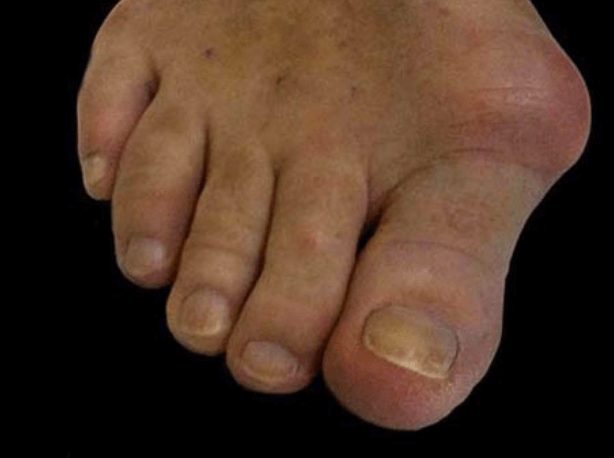
Bunion surgery is one of the most common procedures done in the United States. It is recommended most of these are done in an outpatient setting and patients can go home the same day. Most procedures are done in about 2 hrs and patients can walk in a protective boot. Most bunion procedures involve cutting bone or realigning joints.
Since bone is cut it is important to take calcium or a bone healing supplement. These can help decrease healing time and make recovery much easier. Additionally, I like my patients to use a bone stimulator and remain home for the first couple days. Sacrificing a little time on the front end of the surgery can make recovery much easier. Another supplement like collagen can help with skin healing and provide better scar appearance.
The vast majority of bunion surgeries can be done in our office. A mild anesthetic and a little bit of local anesthetic will provide enough comfort to sleep right through the procedure. Having it done in our office setting, in a sterile environment, provides large cost savings and time savings for patients.
If you have a bunion and are in pain, I can help. Make an appointment today with me at 425-391-8666 or contact us online.
Sincerely,
Dr Brandon Nelson
American College of Foot & Ankle Surgeons
Dr. Brandon Nelson, A Board Certified Physician & Surgeon, Discusses the Best Bunion Surgery Available
Bunion surgery has been performed for over 100 years. There have been many adaptations and changes since the first bunion surgery. There are now over 150 different techniques to address bunion deformities. It should be noted the majority of these can be divided up by anatomical location. We now classify bunion surgery as either a head procedure of a base procedure. Head procedures refer to operating on the head of the first metatarsal (out towards the toes) and base at the base of the first metatarsal (or near the arch).
The decision on which bunion procedure to utilize typically involves the size of the bunion and the underlying foot type. Typically we see smaller bunions are amenable to head procedure and large base procedures. However it should be noted that certain foot types will require base procedures for even small bunions. The goal for bunion surgery is to have lasting results and reproducible results.
I personally perform a lot of Lapiplasty type bunion surgeries. I find these have great long term results and provide incredible corrections. The recovery from the Lapiplasty is longer than a head procedure but the results can be much better. If you suffer from a bunion and would like to have it fixed schedule and appointment today, I can help. Give us a call at 425-391-8666 or make an apppointment online today.
Sincerely,Dr. Brandon Nelson
Dr. Brandon Nelson, A Board Certified Physician & Surgeon, Discusses Bunion Surgery and the Lapiplasty

Bunion surgery is the most common type of surgery I perform. I really enjoy correcting bunions and the outcome can be very satisfying for both the patient and physician. There are many types of bunion procedures that can be executed. Procedure selection is based on the size of the bunion, the patient and overall foot structure. It is important to have an overall foot exam and an x-ray.
Dr Brandon Nelson, A Board Certified Foot & Ankle Surgeon & Physician, Discusses Hammer toes
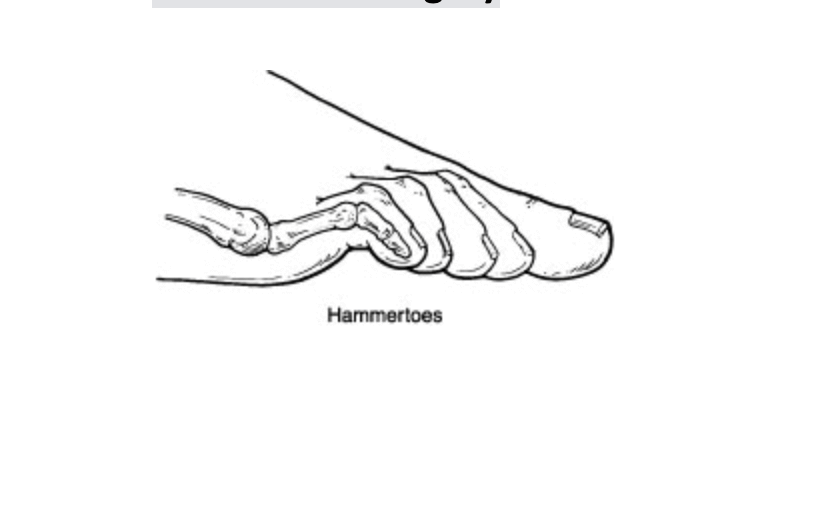
Hammer toes are a condition that develops with a certain foot structure. We see the average hammer toe patient has some underlying foot instability and usually another pathology. The most common pathologies that goes along with hammer toes are bunions or a flatfoot. Sometimes the bunion can cause crowding of the toes, or the flatfoot can cause an increase pull on the tendons to stabilize the foot.
Hammer toes tend to develop with time and milage and get worse with both. The are usually seen as a curling of the toes or a protrusion of the toe bones on the top of the foot. Patients usually begin to feel pressure in their shoes or a rubbing of the digits. This can lead to increased pain and even sores that can become infected.
I always recommend an x-ray as a starting point then an overall foot exam. There are both conservative and surgical options for hammer toes and it depends on location and number of toes involved.
If you have hammer toes or pain in your toes I am happy to help!
Sincerely,
Dr. Timothy Young - a Board Certified Foot Surgeon Discusses Sesamoid Problems – Part 1
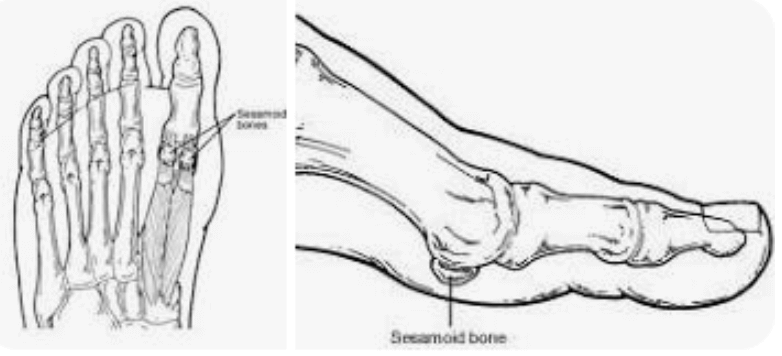
Dr. Timothy Young - a Board Certified Foot Surgeon Discusses Sesamoid Problems – Part 1
Sesamoid problems are fairly common in the feet. There are 2 sesamoid bones at the base of the great toe joint. These are small bones about the size of a pea. A larger sesamoid bone is the patellar kneecap. By definition, a sesamoid bone has a muscle and then the sesamoid bone which crosses the joint, and then there is a tendon from the sesamoid bone crossing over the joint to attach to the other side of the joint. In the knee, there is the quadricep muscle which attaches to the patella or kneecap, and then the knee Is attached to the tibia by the patellar tendon.
This muscle sesamoid bone and tendon complex crosses the joint and gives leverage and protection to the mechanical function of the joint. In the foot, the sesamoid bone can be very vulnerable. As soon as the heel comes up off the ground during gait and other full weightbearing activities, the load and weight is transferred to the forefoot and up to have to wait or more will be transmitted through the sesamoid bones into the head of the first metatarsal. Therefore, any running activity our other sports such as dance puts a heavy load on the sesamoid bones. These are common activities with the sesamoid bones can be injured or damaged.
If you are experiencing foot or ankle pain, give us a call today at 425-391-8666 or make an appointment online.
Dr Brandon Nelson, A Board Certified Physician & Surgeon, Discuss Bunion Surgery

Bunion surgery is probably the most common procedure I execute. Most bunions can be fixed in about 2 hours and provide great long-term results. The most important factor is to have a thorough workup and x-rays to evaluate the foot. Once the foot and x-rays have been done then a plan for surgical or conservative care can be formulated.
If surgical intervention is called for, our office has an onsite surgery center which can save the average patient thousands of dollars as compared to free standing ASC’s or the Hospital. Our certified surgery center provides the best possible patient experience and has been functioning for over 15 years. If you have a bunion and have been contemplating what to do, I can help. I really enjoy helping people with bunions. Please make an appointment and we can discuss your options. Give us a call at 425-391-8666 or make an appointment online today.
Sincerely,
Dr. Timothy Young, Board Certified Foot and Ankle Surgeon, Talks About Hallux Limitus Surgery
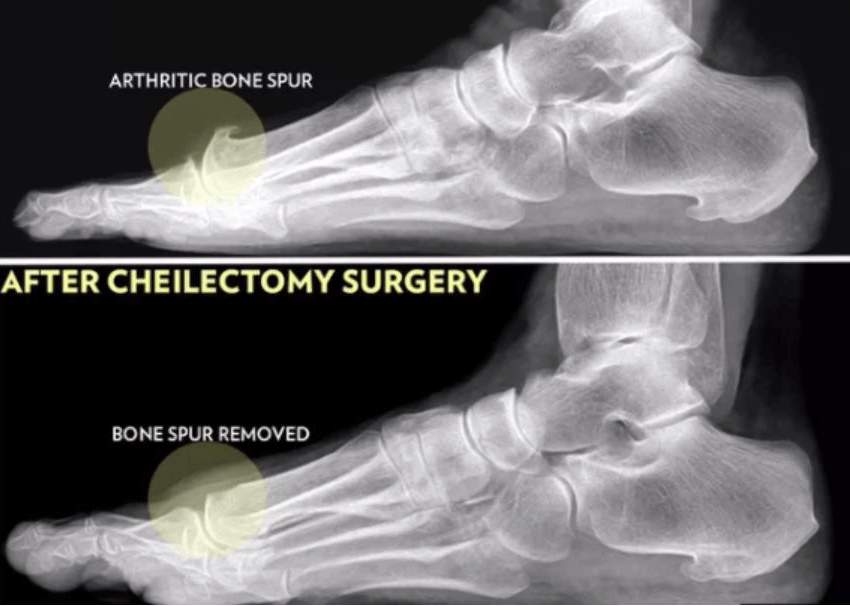
Dr. Timothy Young, board certified foot and ankle surgeon, talks about hallux limitus surgery for arthritic bone spur removal of the great toe.
Arthritis of the great toe is very common. Usually there is excessive compression on the top of the joint, and over months to years, painful bone spurs or osteophytes can develop. These create even more pressure and pain, and there is often bone on bone contact between these bone spurs. Removal of the bone spur is a very effective treatment for this problem. This surgery is called a cheilectomy. Cheilectomy surgery for arthritis of the great toe is quite straightforward and has a rapid recovery. Cheilectomy surgery is the most basic and simple procedure, from a surgical perspective for this condition.
There are more and fall procedures that can be done such as a decompression osteotomy of the bone, or fusion of the joint. These procedures usually require significant additional protection and recovery time. The surgical procedure itself involves access to the joint with an incision through the tissue layers including the joint capsule. The bone spurs are then exposed and removed surgically. This also involves using a surgical bur to smooth down the top of the joint. It is quite common to fine small loose fragments of bone, which are also removed during the procedure. If there are loose flaps of cartilage, and failure removed and the exposed bone can be drilled to create a fibrocartilage patch.
The joint and wound is flushed and then the layers are repaired and sutured. Recovery involves using a surgical shoe or cast boot. Initially putting weight on the heel for the first few days, and after that for weight with a surgical shoe or cast boot works well. Sutures are typically removed 2 weeks after the surgery. Most of our patients stay in the boot for 3 weeks.
If you are experiencing foot and ankle pain, give us a call today at 425-391-8666 or make an appointment online.
Dr. Brandon Nelson, Board-Certified Foot and Ankle Physician and Surgeon, Discusses Chronic Heel Pain
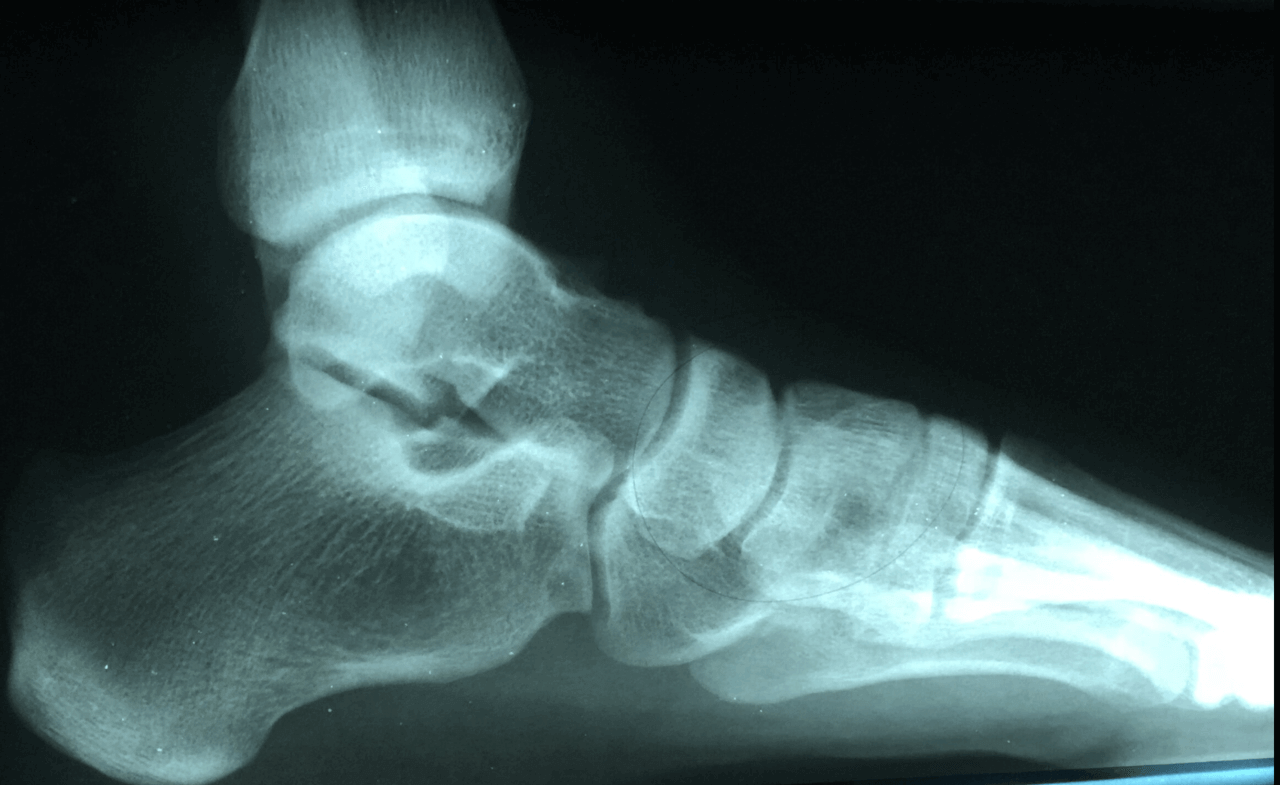
Important distinction should be made between both acute and chronic heel pain. Most physicians consider acute heel pain something that is 4-6 weeks old in nature and still has the ability to resolve on its own and often doesn’t take a lot of intervention. These are the typical patients I can ice and stretch and find a fair amount of relief. However there is a different category of patients ones where the heel pain becomes chronic and these are much harder to treat.
Chronic heel pain is usually described as anything over 6 weeks in nature and oftentimes fairly debilitating. I see quite a few patients that often times have heel pain that has been around for more than a year and regardless of stretching and icing. Chronic heel pain is a different animal and normally requires some sort of biological intervention. I think it is important to address the nature of the chronic heel pain and an MRI to evaluate whether or not a tear is present can be highly beneficial.
If you are suffering from heel pain and this has been going on for months to years I can help. First it is important to identify the underlying causes and at this point implementing a treatment plan that can be curative. Give us a call at 425-391-8666 or make an appointment online today.
Sincerely,
Board-Certified Foot and Ankle Physician
Dr. Brandon Nelson, Board-Certified Foot and Ankle Physician and Surgeon, Discusses Minimally Invasive Bunion Surgery
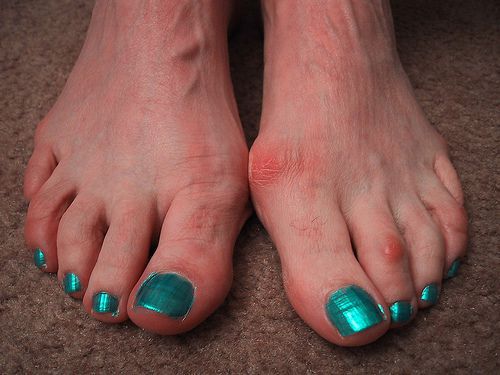
Bunion surgery has progressed significantly since its inception. Years ago, it was not uncommon for patients to stay overnight in the hospital if they had bunion surgery. Often times patients would spend days in the hospital and be in a cast and nonweightbearing for months. However this is a very rare occurrence these days and the majority of procedures are performed in an outpatient setting and very rarely is there an extended period of nonweightbearing. This evolution of bunion surgery has allowed for minimally invasive surgeries to become more commonplace.
Minimally invasive refers to making significantly smaller incisions than we’ll we typically do for bunion surgery. The average bunion can now be performed with minimally invasive surgery through an approximate 2 cm incision. The advantages of minimally invasive surgery is it allows for a quicker recovery and increased healing capacity. The majority of people will heal more quickly than the traditional open bunion procedure and will have less pain.
It is important to note that not every patient is a candidate for minimally invasive bunion surgery as it depends on other factors including overall foot structure and size of the bunion. It is important to have a thorough evaluation and workup for considering bunion surgery, any type of bunion surgery including minimally invasive. If you’re having bunion pain please contact my office and we will be able to get to an appointment and have your bunion evaluated. Give us a call at 425-391-8666 or make an appointment online today.
Sincerely,
Board-certified Foot and Ankle Physician and Surgeon



